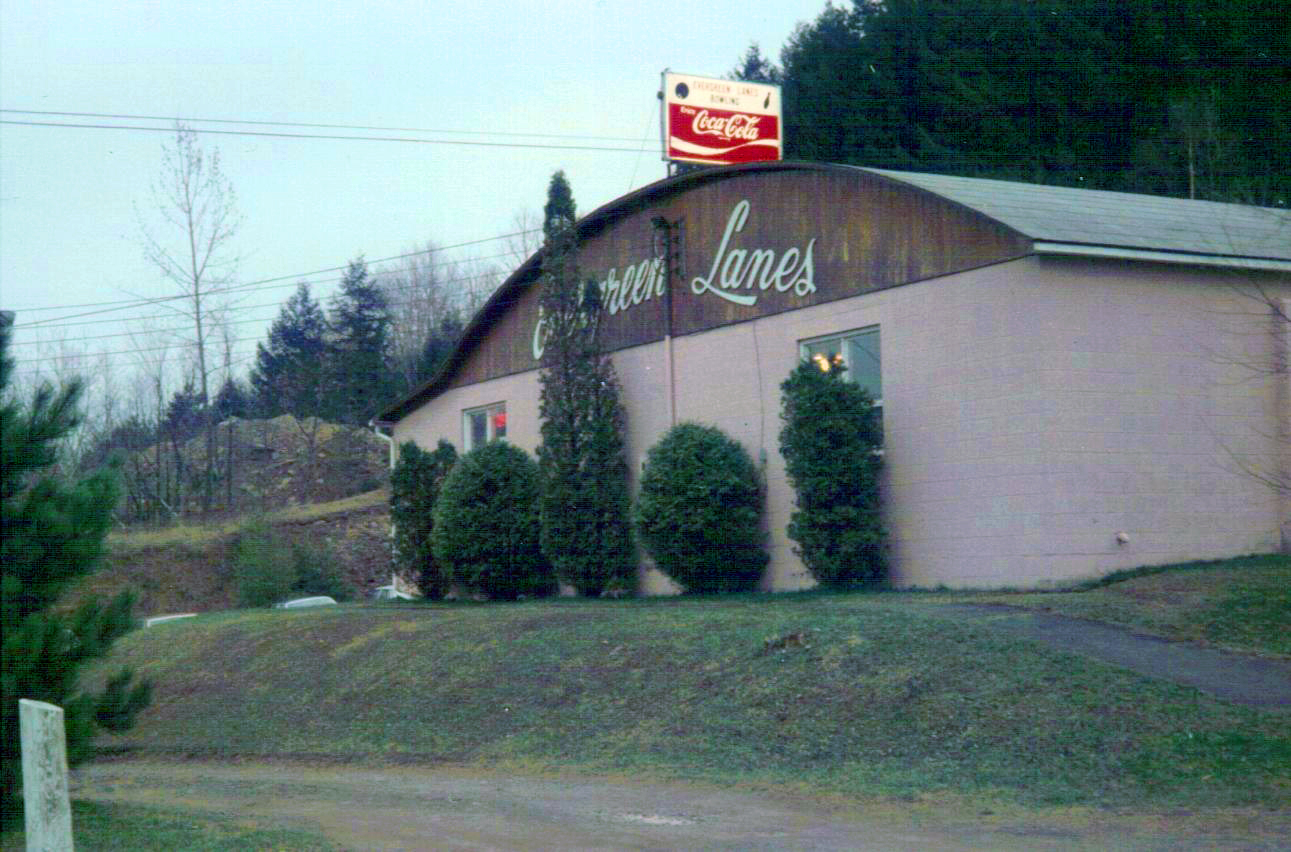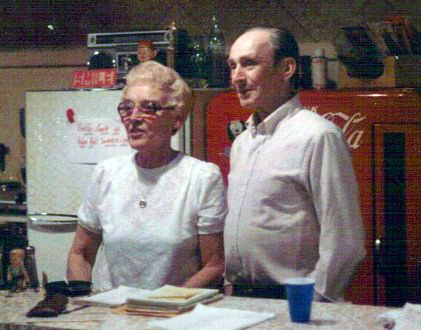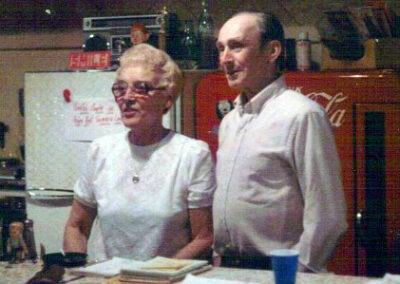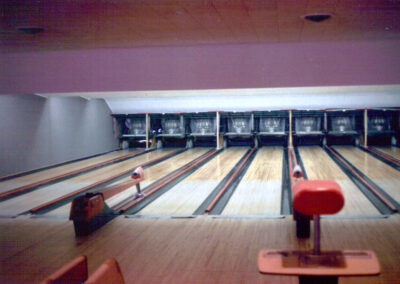
Skiers aren’t the only ones who love winter. Those who hurl heavy balls down long lanes towards meticulously arranged wooden pins brave all kinds of weather to gather at the local bowling alley every week to have some very noisy fun.
Since 1986, Mike Finberg has presided over Margaretville Bowl, the “recreational mecca of the Northeast,” where 120 bowlers in men’s, women’s, mixed and junior leagues roll for individual and team bragging rights from September through April. Except for the addition on the front, the place looks a lot like it did when it opened as Evergreen Lanes in October of 1960.
Hilton Wilbur, proprietor of the Inn-Between Restaurant, designed and built the eight-lane facility across Route 28 from his eatery, convenient for the after-bowling pizza and beer crowd. Dorothy Sanford, his partner in the restaurant, Kate and Orvil Rosa and Bob and Betty Veit were “stockholders” in the business, with the Veits acting as managers. By 1970, the Veits had become sole owners.
But it was not the first bowling alley in Margaretville. Ethel Bussy, in her 1960 history of the village and environs, said that a man named Gray once owned a bowling center on Fair Street. Details are lacking on that, but years later, the Dugan and Tabor Feed Store on Bridge Street, now known as The Granary, current home of Timberland Real Estate office, The Flour Patch and other businesses, once housed a five-lane bowling alley on the second floor.
Second-Floor Lanes
Opened in May of 1945, the Margaretville Bowling Center was owned by a conglomerate of 26 men who put up $12,000 to construct it. Charles Eglinger of Suffern was hired as its first manager under the direction of a committee made up of Everett Herrick, J. R. Weeks and Louis Affron. They must have been pleased to hear that summer that 200 games, at 35 cents a game, were being rolled seven days a week. Ka-ching . . .
Frances “Frisco” Sanford later operated the lanes. The town’s highway superintendent and a New Kingston cauliflower grower, Frisco was known for his amazing strength. He was also a good bowler, an original member of the Masonic bowling team.
Three leagues bowled at the outset of the Bridge Street lanes: the Women’s League; the Suburban League, with teams from Kelly Corners, Dry Brook, Vega and other Margaretville suburbs; and the Organization League, with teams from the fire department, Legion and other groups.
Anna Blish, an avid and award winning bowler, is keeper of the Women’s League’s records all these years later. The minutes from League meetings are full of familiar names. In 1948, Allegra Tomlinson was President, Arral Morgan was VP, Mary Rosa was Secretary and Marie Bussy Treasurer. Twenty women attended the May 6 meeting, and voted to give the previous year’s president, Doris Tuttle, a pressure cooker as a token of thanks. They also voted to levy a nickel fine for every game a person bowled below 100, and 10 cents for games below 80 (new bowlers were exempt until the middle of the season when presumably they would be hitting their stride. . .)
They were generous, though, in dispensing prize money – a total of $68 that year went to Molly Pfarrer, highest average; Chloe Clark, high individual triple, and many more. The awards were presented at the banquet at Kass Inn, where a dinner of ham, sweet potatoes and strawberry shortcake was offered for $2.25 per person.
The leagues belonged to the Delaware-Greene Bowling Association, made up of bowling centers in Windham, Delhi, Walton, Stamford and Margaretville. The level of play was high, and several local bowlers went to regional, state and national tournaments. There were 12 teams in the Women’s League in the 1950-51 season: Internationals were on top, winning 70 and losing 29 games, while Herricks Hustlers won only 31 of the 99 games rolled. In between were Farmall, Mobil Gas, Greene’s Florist, Harold’s Restaurant, Fullers Kandy Kids, Ark-Villa, Faulkners Store, Kass Inn, Stout Craft Motors, and Victory Gals.
The following year there were ten teams, captained by Doris Tuttle, Betty Veit, Mary Todd, Virginia Marks, Lela Maxim, Jackie Robinson, Ruth Dickman, Beatrice Rich, Joan Bouton and Nedra Griffin. That was the year Martha “Mip” Blish, started bowling for Margaretville Telephone where her husband and later their son Bill worked. Deb Hubbell, Ginny Reid and Marion Townsend were also on the team. Mip, bowled for more than 35 years, continuing even after she moved to Florida. With an average somewhere around 180, she was a highly sought sub, and sometimes bowled four times a week.
Pin Setters
Fellow long-time bowler Betty Griffin recalls that Alex Muir was one of the pin setters at the Bridge Street lanes. Alex, brother-in-law to “Frisco” Sanford who ran the place, was a deaf mute. In 1932, he drove his truck into the path of the Red Heifer railroad car because he couldn’t hear it coming. He jumped clear just in time, and survived to age 84. Among his nine sisters was Emma, Frisco’s wife.
Watson “Watty” George was also a pin setter, one of many local youth who got 25 cents a game per lane from tips provided by bowlers. At first the setters would step on a pedal that would raise metal rods at the end of the lane after each bowler’s turn. It was the setter’s job to pick up the wooden pins, which had holes drilled in the bottom, and set them on the rods for the next bowler. Later, a semi-automatic system was developed in which the human setter placed the pins in a mechanical rack which lowered them onto the alley. Either way, it was a lot of bending and lifting. Watty recalls Mary Todd as managing the place in the early 1950s.
The manual pin setting job went the way of the dodo bird when the lanes above the feed store were replaced in 1960 by the Brunswick Automatic Pin Setters at the brand new Evergreen Lanes half a mile down Route 28. Local bowlers welcomed this state of the art facility, which also featured “unitized foul lights, telescorers and hand dryers,” according to the Catskill Mountain News.
Skip Vigars, TV bowling star, came to Evergreen’s grand opening on October 21, 1960, giving an exhibition, free instruction and ball fitting advice.
The Veits worked hard to maintain the center and bought out the other stockholders by 1970. (Founding partner Hilt Wilbur died in 1969.) Hundreds of bowlers made Evergreen their home away from home.

Rolling On…
When Mike Finberg, and boyhood friends Joel Weinberg and Shep Goldstein, bought the alleys from the Veits in 1986, they renamed the place Margaretville Bowl, building a 56 x 16-foot addition with a locker room and game room. The addition was constructed by Clive MacDonald; the signature bowling pin sign, that spun in the breeze from a pole out front, was made by Howard Raab from a single piece of plywood.

After nearly 30 years, Mike has taken a step or two back from the business, letting Tom Miller and Sharon Gavette run Margaretville Bowl. For now, it’s still pretty much the same place where hundreds of bowlers have rolled many thousands of games over the past 54 years. The vibe has appealed to producers of a couple of music videos and an Old Navy commercial looking for that old-is-cool feel.
What they see is what they get, says Mike: “It’s not retro – it’s original.”
BOWLING ALLY PHOTO GALLERY
Click for a larger view of each image…
veits-at-mvil-bowl-1986
Betty and Bob Veit, long time proprietors of Evergreen Lanes, sold it to Mike Finberg and partners in 1986






